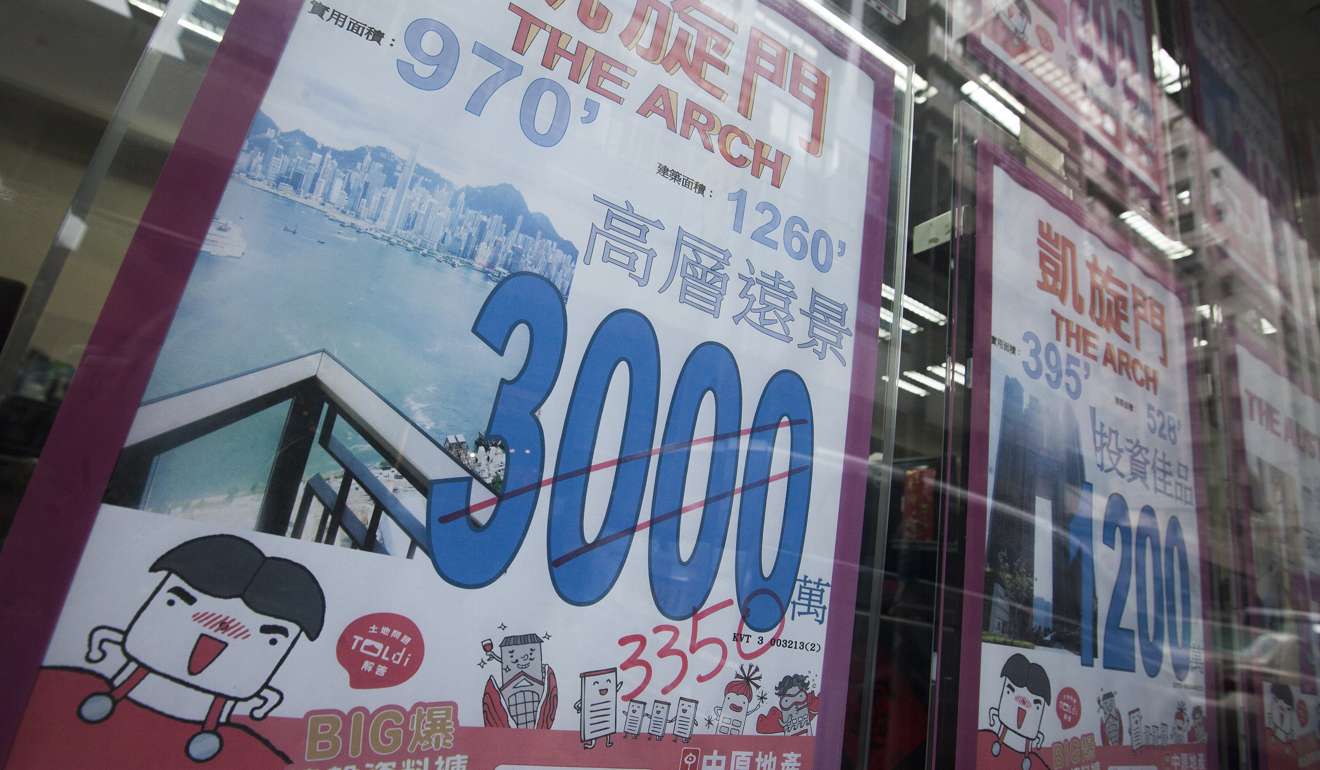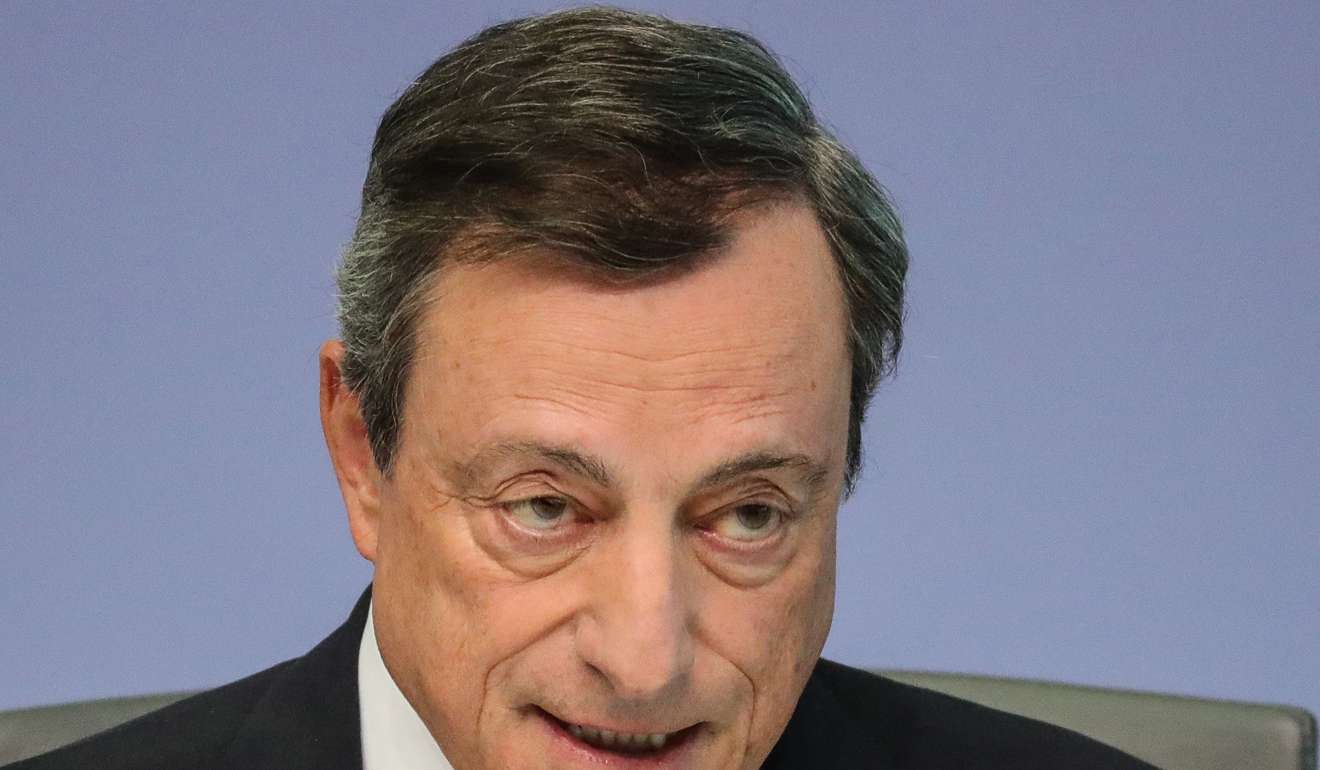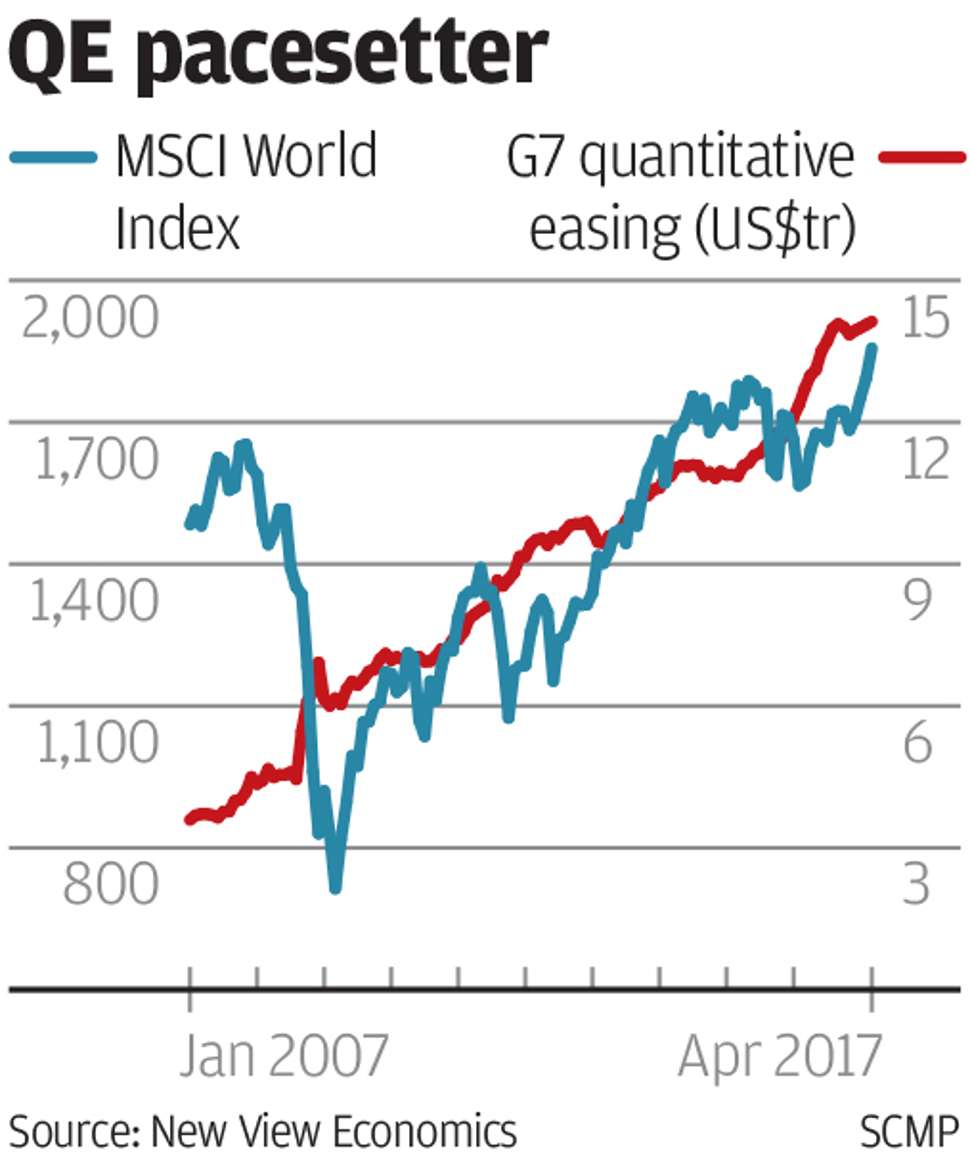
Opinion: Be afraid... markets from stocks to real estate are set for an ‘almighty reality check’
‘For years, investors have been living in a dream world, artificially created by the central banks. But this alternative reality will eventually come to an end – possibly as early as this year’
One can only wonder when the epiphany moment finally dawns on global monetary authorities. After years of plying the markets with a never-ending stream of cheap money, the central bank which blinks first and makes the vital one-letter transformation from quantitative easing (QE) to quantitative tightening (QT) will be the harbinger of tougher times ahead for world financial markets.
The point when QE ends and QT begins is the US$15 trillion question haunting stock market bulls. The central banks’ bond-buying and money-printing schemes have created years of abundance for global investors since the 2008 crash. But once the taps are turned off and the flow is reversed, markets face an almighty reality check.
Investors can rest easy for the moment though, as the switch from QE to QT is not too imminent, judging by the current body language of the US Federal Reserve, the Bank of Japan, the European Central Bank, the Bank of England and Sweden’s Riksbank. But it is a far cry from saying investors should not be prepared.
The pool of cheap money flooding world financial markets is showing no signs of drying up just yet. The Fed might have started to lift interest rates but the prospect of a “taper” in QE money is a policy option the Fed prefers to stay tight-lipped about for the time being.
Central banks now seem too much in thrall of robust growth, vibrant job creation and booming markets to grasp that they are setting investors up for a future shock
The Bank of Japan and the ECB are both still in proactive-QE mode. The Bank of England is keeping an open mind to printing more money fearing future Brexit risks. And, the most likely candidate for first-footing on QE-reversal, Riksbank, just extended its bond-buying programme last week, despite strong economic data.
It seems as if the central banks have changed their spots on traditional inflation-bashing and customary disapproval of market excess, irrational exuberance and undue risk-taking. Post-crash, central banks now seem too much in thrall of robust growth, vibrant job creation and booming markets to grasp that they are setting investors up for a future shock. The chances of being let down lightly are diminishing at a rapid rate.

The trip into quantitative easing after 2008 was a journey into the unknown, brought about by unprecedented events as the world was falling around the central banks’ ears. At the time, QE’s impact was little understood and impossible to model. In retrospect, forthright central bankers would admit most of the QE planning was hastily carried out on the back of envelopes, short on detail and long on hope.
The return journey from QE promises to be just as testing and equally fraught with danger. Investors have become seriously addicted to cheap money in the past nine years and withdrawal effects are likely to be extremely severe. Quantitative easing might have been a boon for leveraged investors and highly geared borrowers, but, as interest rates go higher and the cheap money supply dries up, there will be casualties along the way.

Investors can hardly be blamed for doing the central banks’ bidding. After all, central banks supplied copious amounts of free cash and investors dutifully put it to work in the markets. Funding created by QE, boosted by supplementary liquidity measures, simply became a pile-driver hammering up stock markets after the global financial crash to create the second longest bull market in history.
It has been the vital ingredient behind speculative risk-taking and carry trades ramping up stocks, credit, bonds and emerging markets to record highs. As the process goes into reverse, the consequences are clear. Markets have already had a first-hand taster from the “taper tantrum” of May 2013, when the US Fed first mooted the possibility of easing back its US$70 billion monthly bond-buying programme.
It proved a short-lived disaster forcing the Fed into retreat, but leaving US policymakers very reluctant to trigger a “taper tantrum Mark II”. As sure as night follows day, the “great unwind” from years of global money creation means years of money withdrawal are on the cards. There will be adverse economic consequences for employment and growth and financial markets are bound to suffer.
For years, investors have been living in a dream world, artificially created by the central banks. But this alternative reality will eventually come to an end – possibly as early as this year. United States officials are beginning to hint at it and Germany is imploring the ECB to stop further monetary distortions in Europe.
Nobody is breaking ranks just yet, but, when it happens, major market mayhem is highly likely to follow.
David Brown is chief executive of New View Economics


